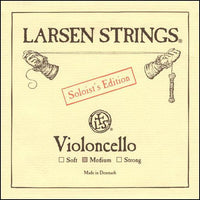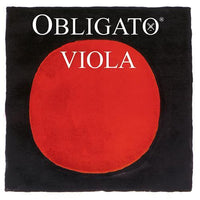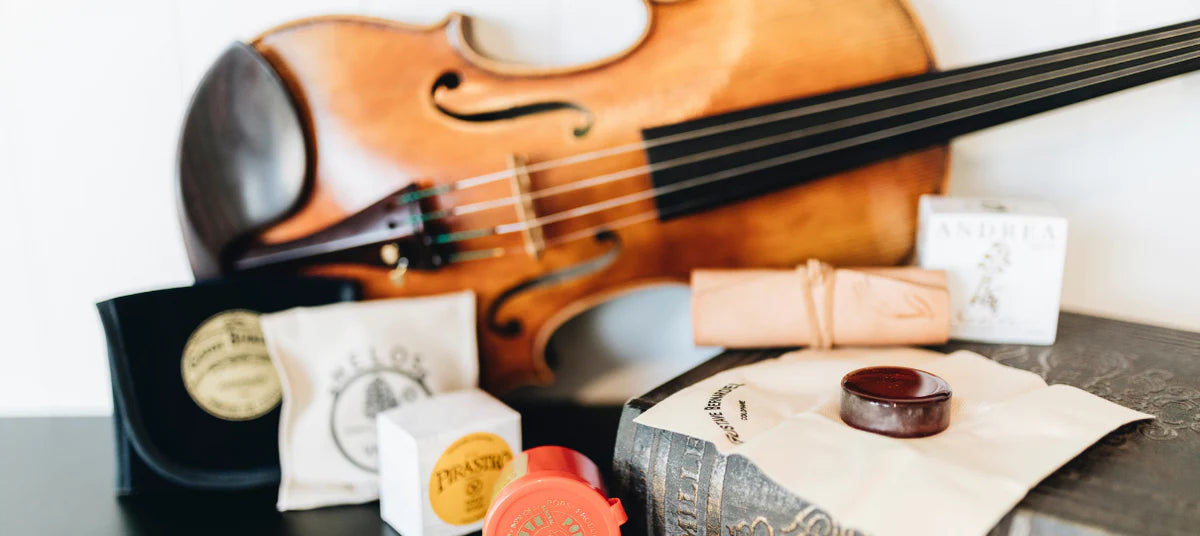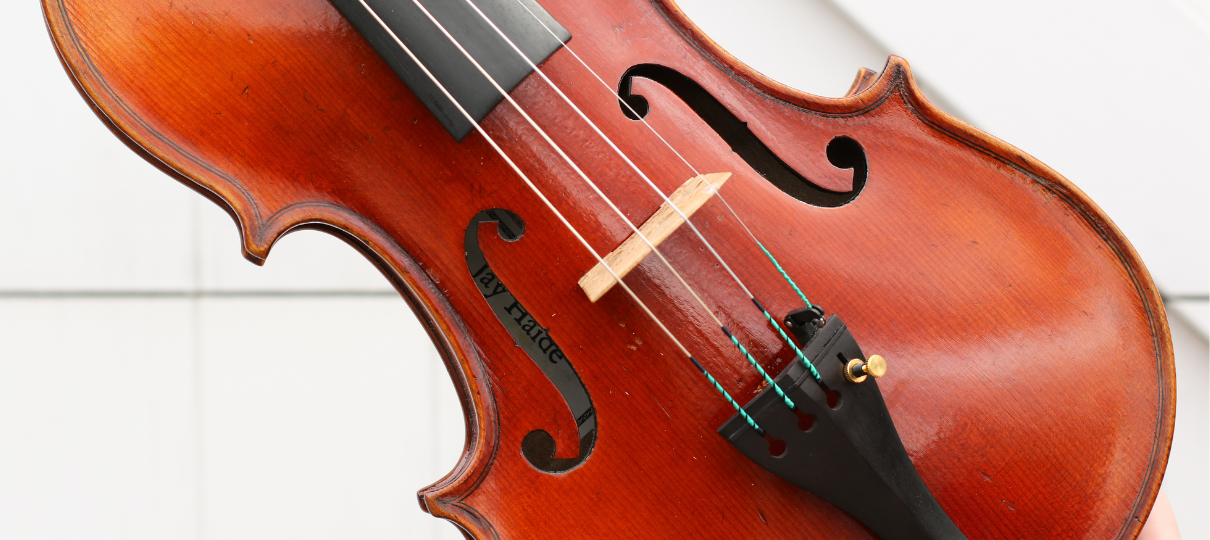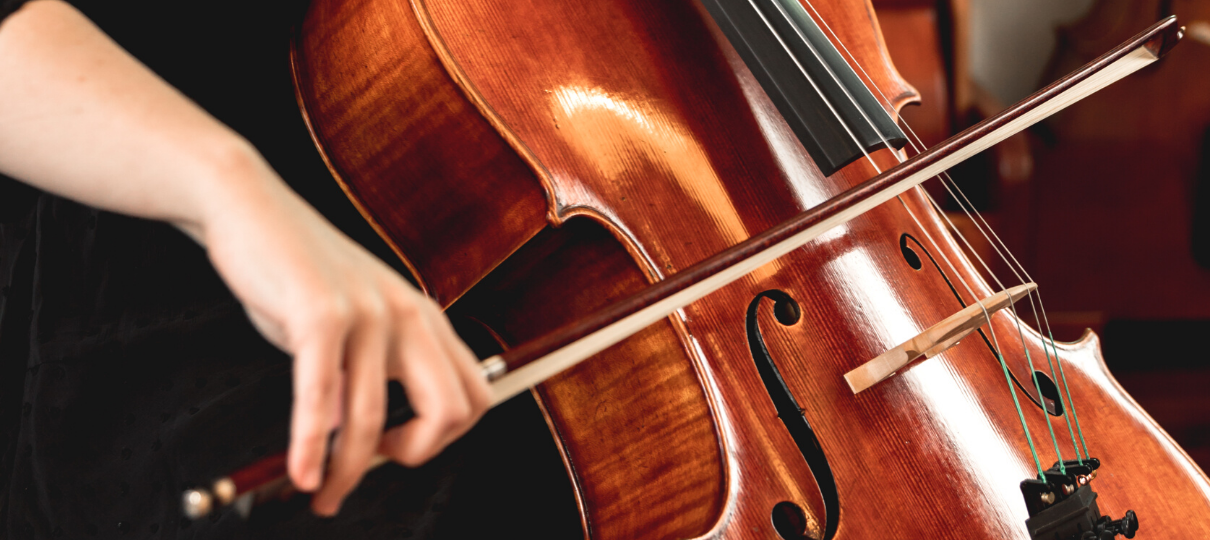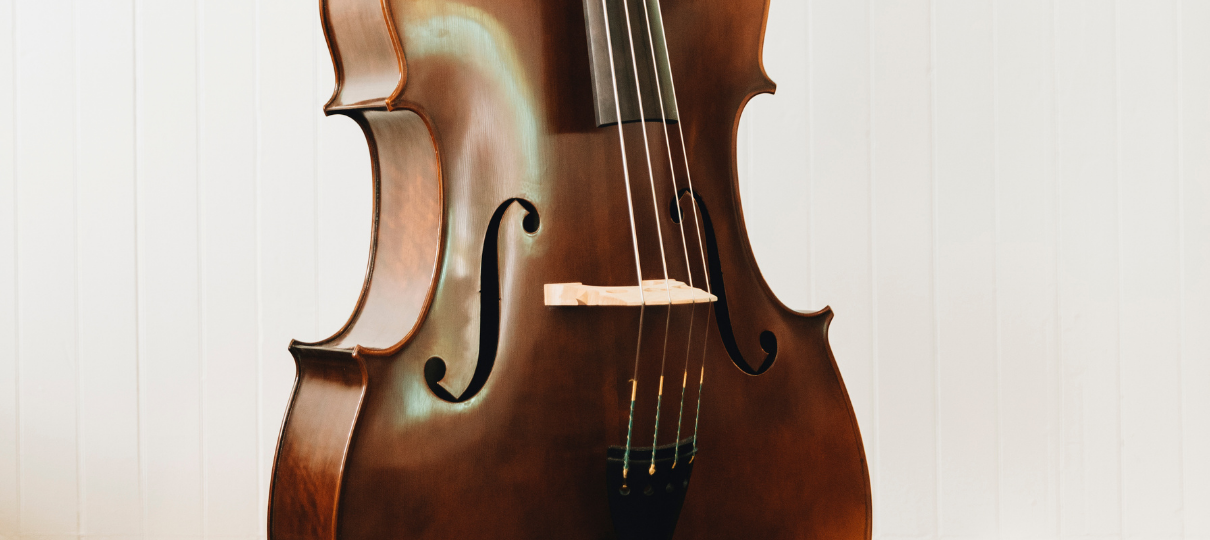Wanting to know more about strings? Read on!
Many musicians and students are amazed and sometimes bewildered by the large range of strings available for the violin, viola, cello and bass. We are offering this information to answer some of the basic questions about choosing strings.
Each different type of string has its own special characteristics, which can change the sound of your instrument. These characteristics can make subtle (and sometimes not so subtle) changes in the quality, playability, volume and responsiveness of the instrument. In some cases, changing one or more strings can improve a weakness in a specific part of the range of the instrument. Some instruments respond best to a certain kind of string and less well with other types. Each instrument has its own personal characteristics. A string that works well with one instrument may not produce the best sound with another brand. There is also a vast number of playing styles that dictate string choice. A classical violinist might choose strings that would be unsuitable for a bluegrass fiddler. A jazz bass player who plays mostly pizzicato would like a string that symphony bassists would find difficult to use.
For centuries, all musical strings were made of sheep gut (not cat gut, as many believe). By the 16th. Century the lower, thicker strings were wrapped with silver wire to reduce mass. Today, almost all gut strings are wrapped with aluminium or silver. In the early 20th century, all-metal strings were introduced to improve stability in pitch and durability. Steel E strings for the violin became popular, primarily because gut E strings broke so quickly. About 20 years ago, strings with nylon cores were introduced. They share many of the tonal qualities of gut strings but are much more stable in pitch as compared to gut strings, which need constant tuning. Today, perlon core strings are the most popular strings among students and classical players.
Gut Core Strings
Many classical musicians still prefer gut strings for their warm sound, full of complexity with rich overtones. When you play on a gut string, you can hear much more than just a simple uncomplicated tone. The response is a bit slower than synthetic core strings, and has a lower tension, giving them a pliable feel under the fingers. Musicians who perform early music on instruments set up in the Baroque style wouldn’t think of using anything else but gut strings.
There are, however, some problems with gut strings, the most troubling of these is the gut string’s instability in pitch. Gut strings go out of tune frequently. For the first week or so after installation, they must be tuned constantly while they stretch. They also are very sensitive to changes in temperature and humidity. In addition, they are more expensive than most other strings. We would hesitate to recommend a gut string to a beginning or even intermediate student because of these characteristics.
Steel Core Strings
Steel core strings came into existence partially because of the drawbacks of gut strings and as a concession to beginning students. Steel core strings are very stable in pitch, even when first installed. They also have a sound that is very different from gut strings. They all tend to have a sound that is simple, clear, direct, pure, and usually a bit hard with few overtones and no real complexity. Often they are bright and a bit thin sounding. This quality is not as pronounced in the cello where all metal strings are more standard. Non-classical players, especially country and folk fiddlers, as well as many jazz musicians often prefer steel strings. They also work well with small size, inexpensive student instruments. In addition, most bass players use steel core strings.
There have been some interesting changes in the construction of steel strings and these changes have been of particular interest to cellists. Steel cores (usually thin fibres of roped or spiralled steel) are now wrapped with a variety of metals such as aluminium, chrome steel, tungsten, silver and most recently, titanium. These changes in technology have allowed manufacturers to produce strings with more sophisticated sounds. When we discuss different brands, we will go into more detail about these different materials and their unique sound.
Synthetic Core Strings
Over the last 25 years, more and more musicians have switched from gut to synthetic core strings. The more common synthetic used is Perlon, a kind of nylon. These strings share many of the tonal characteristics of gut strings but are much more stable in pitch and generally have a faster response. They need to be tuned far less often, and “play in” only after a day or two rather than the usual week that it takes for gut strings to stabilize. Since the core is synthetic, this type of string can be more consistent in quality than gut, but they do lack some of the complexity of sound that gut strings have. Because of this, some musicians prefer to continue using gut strings. Today there is a large variety of synthetic core strings on the market, each with their own special characteristics.
String Gauges
Almost all strings are available in different thickness or gauges. The majority of string players use the medium gauges. The majority of the strings we sell are medium tension, as they suit most instruments! In general, a thicker than normal string will require more tension in order to bring it up to pitch. This increase in tension will produce more volume and sometimes a fuller sound but with a slower response. A thinner string requires less tension and will give a faster response, but with less volume and a thinner, slightly more focused sound. What gauge string you choose will depend on the qualities of the particular instrument you are playing. A violin may need a thicker string to give it more “punch” or power, or more fullness of sound. Yet on other instruments, those thick strings will choke the sound and make it unresponsive and dull. On the other hand, a thinner string might help an instrument with a dull, unfocused, fuzzy sound but might sound shrill and thin on others.
We must stress that every instrument responds differently to different strings. The only way to determine the optimum string for you is to try a variety of strings on your own instrument.
Installing Strings
If you purchase a set of strings or even just a single E-string, we can install these for you free of charge in store! We recommend changing strings every six to twelve months. Over time, strings lose their brilliance and edge and become dull and unresponsive. Most musicians don’t realize how the sound of their strings change over time because the change is so gradual.
When changing strings, remove only one at a time with all the others up to pitch, keeping the tension on the top. Before putting on the string, use a soft pencil on the groove in the nut and bridge. The graphite is a lubricant that reduces the chance of string breakage. Don’t tighten the strings to a higher than normal pitch as this will weaken the string and increase their chance of breakage.
Strings should be wound evenly from the centre of the peg to the edge of the pegbox, but should not push against the peg box. The condition of the nut, pegs, bridge and tailpiece of your instrument is very important. Strings should fit the grooves in the nut and bridge correctly. If the grooves are worn or uneven, your strings will break more easily. We're happy to examine your violin, viola or cello to be sure that everything is in optimum condition.
Shop violin, cello, viola and double bass strings online and in-store now at Australia's best prices.















